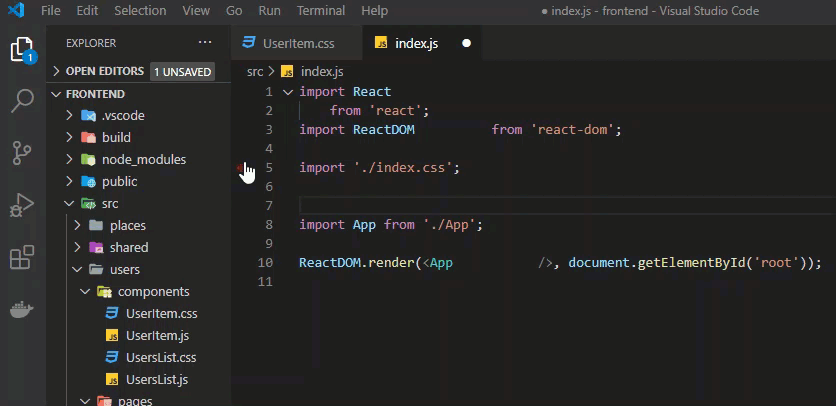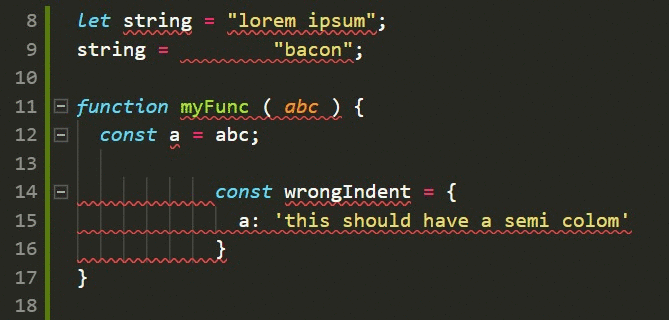
#Prettier code formatter code#
Here’s a brief example of some formatted code by Rome: There’s a neat little GIF on their announcement page: Allowing formatting to work despite syntax errors, which is something prettier does not offer. Rome also comes with something they have called Error Recovery. JavaScript // rome-ignore format: // prettier-ignore Rome recommends installing it only locally for the time being However, it only supports Visual Studio Code we just have to search up Rome in the extensions:īut for the purposes of this post, I want to run both prettier and Rome from the CLI. I’ll be evaluating the two on the following criteria: In this article, I’ll go over my experience in Rome vs Prettier.Īs a disclaimer as Rome is only focused on those languages the comparison will also only be focused on those! What is a formatter?Ī formatter applies opinionated stylistic conventions to text files, in this case, our coding files! These conventions can include but are not limited to, indentation style, quotation usage, code line length, and tons more depending on the language!

That’s a whole lot of change but it’s intended to be a one-stop-shop for web dev tooling. It allows reaching much better performance in comparison to other frameworks.Rome is designed to be a formatter, linter, bundler, and much more for JavaScript, Typescript, HTML, Markdown, and CSS. Vue.js weights around 20KB keeping its speed and flexibility. Vue.js can help to develop pretty large reusable templates. Smaller interactive parts can be easily integrated into the existing infrastructure with no negative effect on the entire system. Vue.js can be used for both building single-page applications and more difficult web interfaces of apps. It has similarities with Angular and React in terms of design and architecture. It provides a rapid switching period from other frameworks. Vue.js has very good documentation which can fasten learning curve for developers. This helps to optimize HTML blocks handling with the use of different components. Vue.js has many similar approaches with Angular. The main reason we have chosen Vue.js over React and AngularJS is related to the following artifacts: NativeScript-Vue for mobile development.Google Fonts and Font Awesome for typography and icon toolkit.ESLint, TSLint and Prettier for coding style and code analyzes.Vuetify as Material Component Framework (for fast app development).Vue Styleguidist as our style guide and pool of developed Vue.js components.Nuxt.js consisting of Vue CLI, Vue Router, vuex, Webpack and Sass (Bundler for HTML5, CSS 3), Babel (Transpiler for JavaScript),.Other Benefits: Kubernetes is backed by the Cloud Native Computing Foundation (CNCF), huge community among container orchestration tools, it is an open source and modular tool that works with any OS.Scalability: All-in-one framework for distributed systems.Monitoring: It supports multiple versions of logging and monitoring when the services are deployed within the cluster (Elasticsearch/Kibana (ELK), Heapster/Grafana, Sysdig cloud integration).Functionality: Kubernetes as a complex installation and setup process, but it not as limited as Docker Swarm.Applications: An application can be deployed using a combination of pods, deployments, and services (or micro-services).Key features: Easy and flexible installation, Clear dashboard, Great scaling operations, Monitoring is an integral part, Great load balancing concepts, Monitors the condition and ensures compensation in the event of failure.The main reason we have chosen Kubernetes over Docker Swarm is related to the following artifacts: Redis as preferred in-memory database/store (great for caching).PostgreSQL as preferred database system.Amazon S3) for deploying in stage (production-like) and production environments

SSLMate (using OpenSSL) for certificate management.

nginx as web server (preferably used as facade server in production environment).Heroku for deploying in test environments.Kubernetes as cluster management for docker containers.VirtualBox for operating system simulation tests.Docker Compose for multi-container application management) Prettier / TSLint / ESLint as code linter.CircleCI for continuous integration (automatize development process).Respectively Git as revision control system.GitHub Pages/ Markdown for Documentation, GettingStarted and HowTo's) for collaborative review and code management tool Our whole DevOps stack consists of the following tools:


 0 kommentar(er)
0 kommentar(er)
